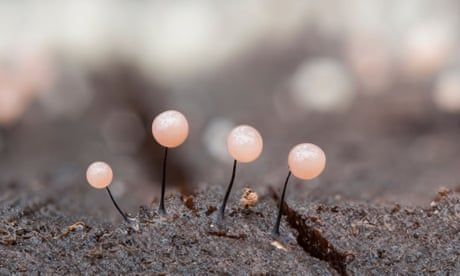
These tiny organisms matter. They have been used to map dark matter and improve transport networks, and they’re living all around us
A few years ago, I started looking at the underside of logs and it changed my life. I found a secret carnival of the most bodacious and interesting organisms I had ever seen. Bubbles of candy-pink gloss on stilts (Comatricha nigra), bunches of rainbow iridescence on toffee strings (Badhamia utricularis), bouffants of raspberry parfait (Arcyria denudata) – and those are just a few that have appeared on bits of wood in our urban garden.
Slime moulds, or myxomycetes, spend part of their life cycle as what are known as fruiting bodies – which look a bit like tiny mushrooms, hence why they were once classified as fungi (they’re actually in the kingdom Protista). Often you will find them, at this stage, in a colony – or, well, I’d suggest galaxy, sweetshop or funfair would be more accurate for a collective noun.
Lucy Jones is the author of Matrescence, Losing Eden and The Nature Seed
Continue reading...